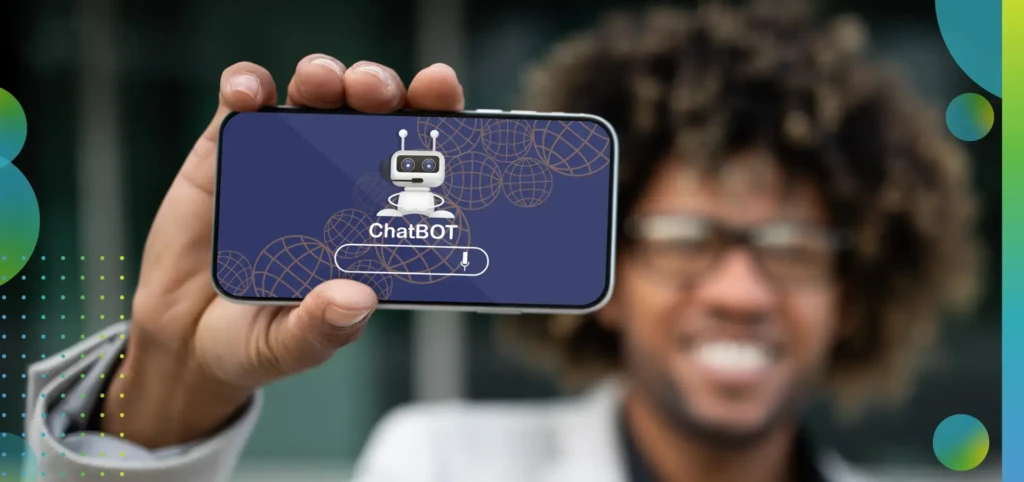Artificial Intelligence (AI) is an integral part of daily life. From the virtual assistants on your phone to personalized shopping recommendations online, AI is transforming how we work, live, and connect.
If you’re new to using AI and are not sure how tools that are integrated with it could benefit your business, we’ve got your back. This guide will break down what AI is, how it works, how it helps businesses today, and, most importantly, how to get started with tools you can use today.
- What Is AI & How Does It Work?
- Common AI Applications & Everyday Examples
- Why Beginners Should Learn About AI
- How To Get Started: A Step-By-Step AI Tutorial For Beginners
- Responsible AI Use for Business

What Is AI & How Does It Work?
At its root, artificial intelligence refers to computer systems that can perform cognitive tasks, such as learning, reasoning, automating, problem-solving, and decision-making, that typically require human intelligence.
Think of AI as teaching machines to act a little like the human brain. Instead of hard-coding every instruction, we train AI models with training data. Over time, these AI systems learn patterns, adapt, and perform complex tasks with minimal human intervention.
Business analogy: Training AI is like onboarding a new sales rep. At first, you give them clear instructions (supervised learning), but over time, they start spotting customer patterns on their own (unsupervised learning).
Important Abbreviations to Know Regarding AI
- AI: Artificial Intelligence
- ML: Machine Learning
- DL: Deep Learning
- NLP: Natural Language Processing
- ANNs: Artificial Neural Networks
How Does AI Work? Simple Behind the Scenes
While it sounds like magic, AI works in a surprisingly easy way. It works by combining data processing, machine learning algorithms, and neural networks to mimic how humans think and learn. Essentially, data processing enables it to plan its next move and learn from the user’s inputs.
Here’s the simple flow:
- Data collection: AI gathers raw data or historical data (text, numbers, images, or unstructured data).
- Pattern recognition: Machine learning models detect patterns.
- Continuous learning: With more data, AI systems adapt and refine accuracy.
Working Techniques:
- Supervised learning: AI learns from labeled data.
- Unsupervised learning: AI explores unlabeled data to find hidden structures.
- Reinforcement learning: AI learns by trial and error, guided by rewards

Common AI Applications & Everyday Examples
You already use AI applications daily, even if you don’t realize it.
- Virtual assistants like Siri and Alexa.
- Personalized shopping and product recommendations.
- Streaming suggestions on Netflix or Spotify.
- Image recognition for tagging photos on Google Photos.
- Self-driving cars are guided by sensors and AI algorithms that work together to help get you through traffic, or even assist in driving the vehicle.
- Chatbots that handle customer service for multiple big companies like Booking.com.
These are powered by AI programs, generative AI applications, and advanced AI systems running behind the scenes.
Why Beginners Should Learn About AI
The AI era is here, and the AI capabilities are only expanding.
1. For Businesses
- AI helps drive business growth by automating processes and improving customer experiences.
- AI tools like Google Cloud AI services like Docs, Meet, Sheets, and more include access to Gemini, while Microsoft Azure AI and Amazon SageMaker simplify data management and analyze data at scale.
2. For Individuals
- Learning AI builds future-proof skills.
- Understanding generative AI models, gen AI tools, and machine learning models gives you a competitive edge.
- It sparks curiosity and adaptability, two must-have traits for thriving in tech.

How To Get Started: A Step-By-Step AI Tutorial For Beginners
Ready to see what AI can do for your company? The good news is you don’t need to be an engineer or data scientist to start using AI tools. Here’s the practical path we recommend for businesses and partners:
Step 1: Identify the Basics of AI in Your Workflow
Start by mapping out the repetitive, time-consuming tasks in your business. Think customer FAQs, writing product descriptions, email follow-ups, or reporting.
These are often the easiest and most impactful areas to apply AI right away.
Step 2: Experiment with No-Code AI Tools
Today’s AI tools don’t require programming skills. Start with simple, accessible platforms:
- ChatGPT or Google Gemini for generating text, summaries, and responses.
- Jasper or Copy.ai for marketing copy and blogs.
- Canva AI for quick image design and branding assets.
HubSpot AI or Salesforce Einstein for CRM insights.
This way, you can test the value without a heavy investment.
Step 3: Understand Core Business Applications
Once you’ve tried the basics, think bigger:
- Customer support: AI chatbots handle routine queries.
Marketing: Tools optimize SEO, recommend content, and personalize campaigns. - Sales: Predictive models highlight which leads are worth pursuing.
Operations: AI automates scheduling, document handling, and fraud detection.
Step 4: Run Pilot Projects
Choose one area of your business to run a small AI experiment. For example:
- Set up an AI chatbot on your website.
- Use generative AI to draft newsletters or product descriptions.
- Apply AI-powered analytics to customer data for trend spotting.
Start small, measure results, and adjust quickly.
Step 5: Pick a Focus Area to Scale
Once you see success, choose where to double down:
- Customer experience: Smarter chatbots and personalization.
- Marketing and content: Faster, higher-volume content creation.
- Data and analytics: Predictive models for smarter planning.
- Automation: Workflow automation to reduce costs.
The goal is not just testing AI but also building it into everyday operations for long-term growth.

Responsible AI Use for Business
As companies adopt AI, the conversation isn’t just about what the technology can do. It’s about how to use it responsibly. Trust and transparency are non-negotiable if you want customers to embrace AI-powered services.
- Bias: If AI learns from flawed or limited data, it can produce inaccurate or unfair results. Businesses need to monitor outputs and apply human judgment.
Privacy: Protecting sensitive customer data is essential. Always ensure compliance with data protection regulations (like GDPR or CCPA).
Accountability: AI should support human decision-making, not replace it. Think of it as a tool that augments your team, not a substitute.
Transparency: Be open about when and how AI is being used, whether it’s in chatbots, marketing, or analytics.
Responsible AI isn’t just ethical, it’s essential in doing good business. Companies that use AI in a fair, safe, and transparent way earn trust, strengthen relationships, and create long-term customer loyalty.
Conclusion: Start Your AI Journey with Hostopia Today
At Hostopia, we believe AI isn’t just for tech giants. With the right tools and mindset, any business can start exploring AI to save time, improve customer experience, and unlock growth opportunities.
Whether you want to help your customers work smarter, not harder, help them generate personalized marketing content, or get smarter insights from value-added services you are offering today, the best time to start experimenting is now. Explore AI resources, contact us today!
FREQUENTLY ASKED QUESTIONS
Does Hostopia sell any products today with AI functionality?
Yes, we do! Our website builder, email marketing tool, DIY logo designer, and all of our value-added services are AI-powered solutions to help customers do their best business.
What skills are needed to learn AI?
No. Most AI platforms today are no-code and built for business users.
How is AI different from regular software?
Traditional software follows fixed rules. AI learns, adapts, and improves based on data — making it far more flexible for customer needs.
Where can I find AI tools that are easy to try?
Start with platforms like ChatGPT, Jasper, or Canva AI for quick wins. Hostopia’s Knowledge Base also provides guidance on integrating AI into your business.
What’s the difference between narrow AI and artificial general intelligence?
- Narrow AI: Focused on specific tasks, like chatbots.
- Artificial General Intelligence (AGI): Hypothetical AI that matches the full spectrum of human intelligence. It’s considered to be the next level of AI development. According to Google’s AI research, AGI is expected to be available by 2030.

